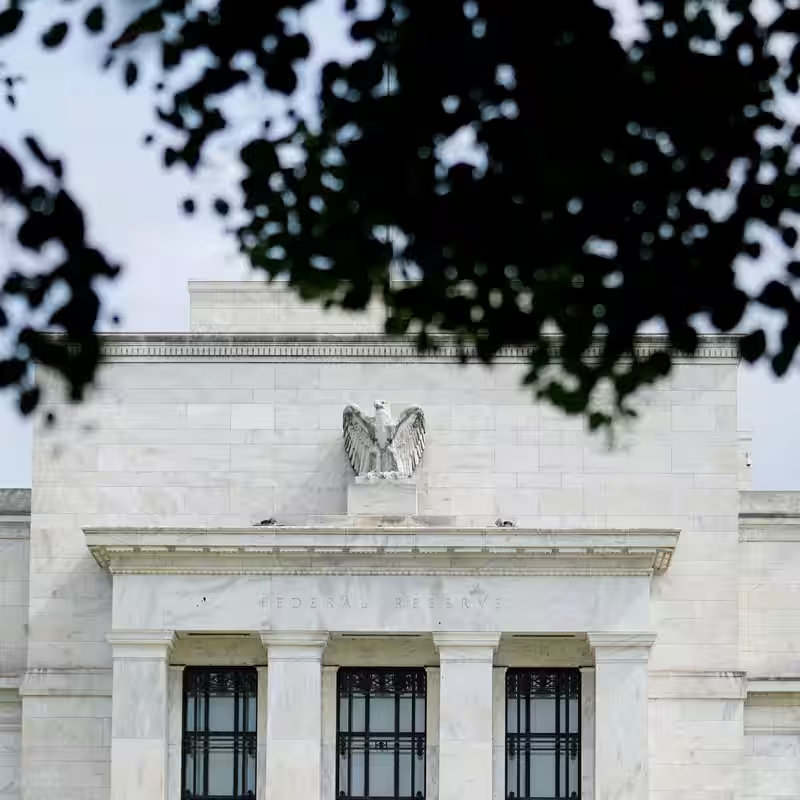Table of Contents
- The Fed’s Inflation Confidence Under Scrutiny
- “No Risk-Free Path” Ahead for Policymakers
- What Leading Economists Are Saying
- Labor Market vs. Price Pressures: A Delicate Balance
- What’s Next for Interest Rates?
- Sources
Is the Fed Too Confident About Inflation?
As the Federal Reserve navigates one of the most uncertain economic landscapes in recent memory, a growing chorus of economists is warning that the central bank may be overly optimistic about its inflation outlook. Despite signs of cooling consumer prices, underlying pressures—from wage growth to global supply bottlenecks—could reignite price surges just as the labor market shows signs of fragility.
The Fed’s current stance hinges on a belief that inflation is sustainably tamed. But critics argue this confidence might be premature—and potentially dangerous.
“No Risk-Free Path” for the Federal Reserve
Fed officials themselves have acknowledged the tightrope they’re walking. In recent communications, policymakers described the current moment as offering “no risk-free path.” On one side looms the threat of a sharp slowdown in the labor market; on the other, a resurgence in price pressures that could undo years of hard-won progress.
With interest rates still near two-decade highs, any misstep could tip the economy into recession—or allow inflation to flare anew.
Fed’s Key Dilemmas in 2025
| Risk Factor | Potential Consequence |
|---|---|
| Over-tightening policy | Unemployment spikes; consumer spending collapses |
| Loosening too soon | Inflation rebounds; credibility erodes |
| Geopolitical shocks | Energy or food prices surge unexpectedly |
| Wage growth persistence | Services inflation remains sticky |
What Leading Economists Are Saying
Several prominent economists have pushed back against the Fed’s rosy narrative. Dr. Lisa Cook, former Fed governor and current professor at Michigan State University, warned in a recent interview that “core services inflation—especially in housing and healthcare—hasn’t shown durable improvement.”
Similarly, Larry Summers, former Treasury Secretary, cautioned that the Fed’s models may be underestimating second-round effects from recent wage gains. “Once inflation expectations become unanchored, it’s incredibly hard to re-anchor them,” he said.
Even within the Fed, dissent is brewing. Minutes from the latest FOMC meeting revealed that several regional bank presidents advocated for a more data-dependent approach, resisting calls to signal imminent rate cuts.
Labor Market vs. Price Pressures: A Delicate Balance
The U.S. labor market has remained surprisingly resilient through 2025, with unemployment hovering near 4%. But recent job reports show slowing hiring and rising layoffs in tech and manufacturing—early warning signs that could foreshadow broader weakness.
Meanwhile, the Personal Consumption Expenditures (PCE) index—the Fed’s preferred inflation gauge—rose 2.8% year-over-year in September, slightly above the 2% target. More concerning: the “supercore” PCE, which strips out food, energy, and housing, remains stubbornly elevated at 3.4%.
This dichotomy leaves the Fed in a bind: cut rates to support jobs, or hold firm to crush lingering inflation?
What’s Next for Interest Rates?
Markets are currently pricing in two rate cuts by mid-2026, but Fed Chair Jerome Powell has repeatedly emphasized that decisions will be “guided by incoming data, not calendars.”
Upcoming indicators—especially October’s CPI report and November’s jobs data—could be pivotal. If either shows unexpected heat, the Fed may delay easing longer than investors hope.
For now, the central bank’s message is clear: vigilance over victory. But as one anonymous Fed staffer told The New York Times, “We’re flying blind in some areas. The models don’t capture everything.”




